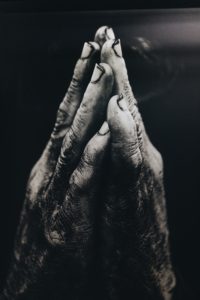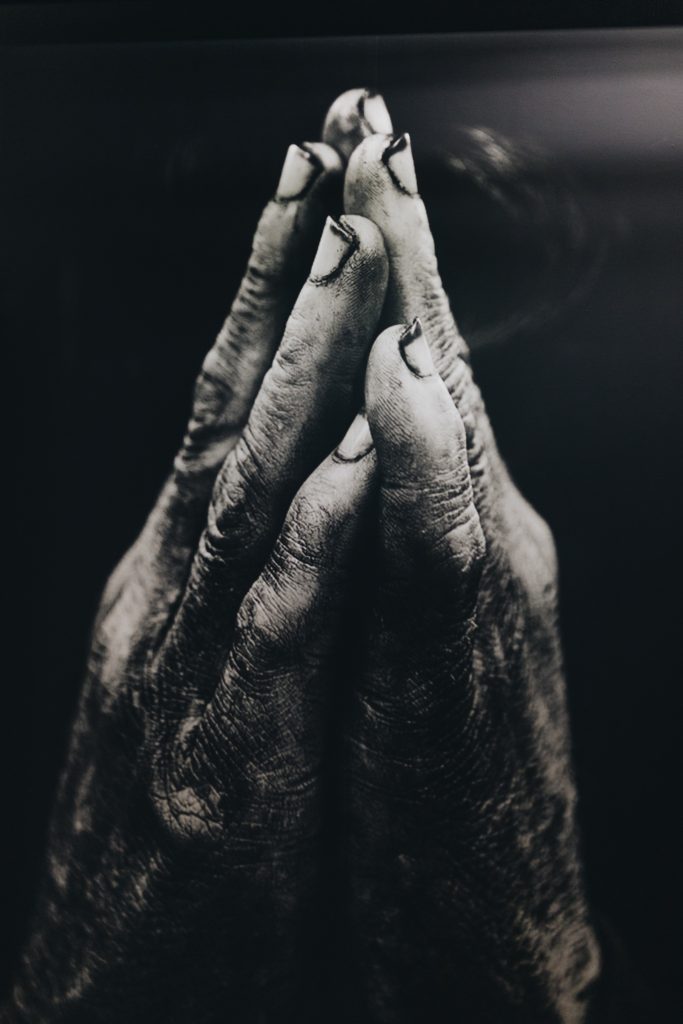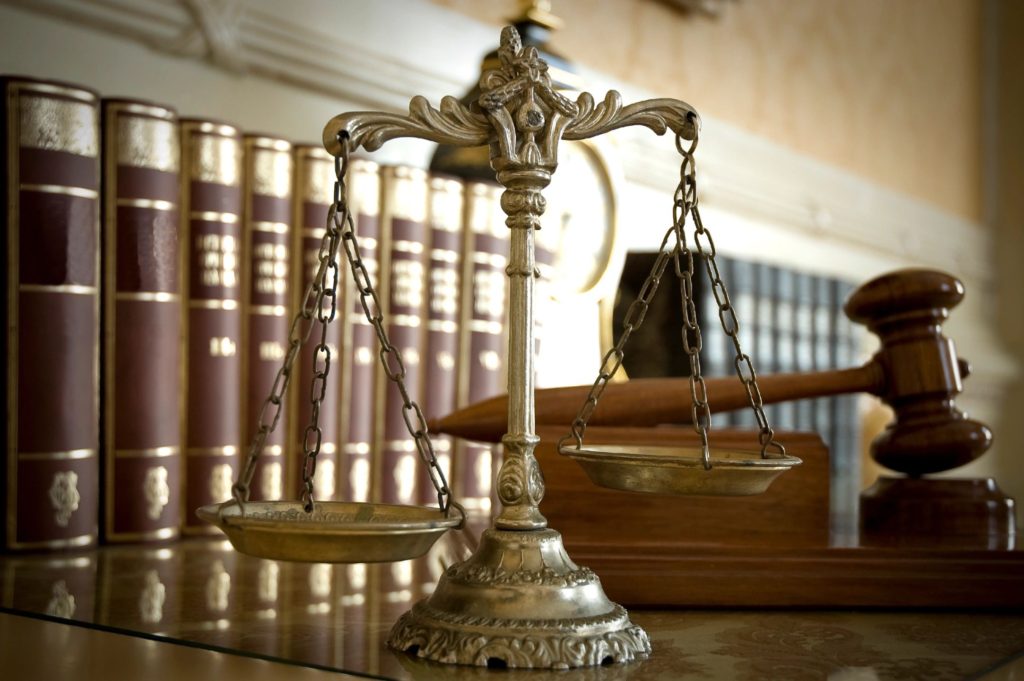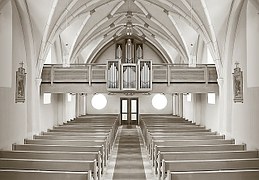By: Grace Mohlin
For decades, the Department of Homeland Security (“DHS”) has limited Immigration and Customs Enforcement (“ICE”) actions in churches, places of worship, and other sensitive locations to protect access to essential services. In January 2025, the current administration rescinded this policy, prompting Quaker congregations to sue the DHS, arguing that the policy violated their religious freedoms.[1] Filed in the Fourth Circuit’s jurisdiction, this case could impact faith communities across North Carolina.[2]
Since 1993, an ICE policy prohibited agents from enforcing immigration laws in “sensitive locations” absent exigent circumstances.[3] Under the most recent iteration of this policy, these sensitive locations included places like schools, healthcare facilities, places of worship, food banks, and domestic violence shelters.[4] The underlying rationale is that enforcement actions taken in or near these areas restrain an individual’s access to receive or engage in essential services and activities.[5]
Policies regarding sensitive locations have changed depending on the administration. For example, ICE has classified hospitals and courthouses as sensitive locations under some administrations, but not others.[6] Yet, ICE has recognized places of worship as protected spaces for over thirty years.[7] This continued protection is often viewed as a commitment to religious freedom.[8]
On January 20, 2025, the current Trump administration issued a new directive revoking the sensitive place policy.[9] The directive stated “bright line rules regarding where our immigration laws are permitted to be enforced,” were unnecessary, and instructed ICE agents to use discretion and “a healthy dose of common sense” in enforcing immigration laws.[10] Thus, churches and places of worship are no longer given special protection regarding immigration enforcement.
As a result, four Quaker congregations filed suit in U.S. District Court for the District of Maryland on January 27, 2025, against the DHS.[11] The complaint alleges that the new policy violates the Religious Freedom Restoration Act (“RFRA”), in addition to First Amendment and Administrative Procedure Act.[12] The RFRA claim is particularly nuanced because it alleges the new policy substantially burdens their religious freedom as a result of indirect, rather than direct, government interference.[13]
Under the RFRA, the federal government cannot substantially burden a person’s exercise of religion unless the government has a compelling interest that it pursues through the least restrictive means.[14] A burden is substantial when it puts “substantial pressure on an adherent to modify his behavior and to violate his beliefs” or “forces a person to choose between following the precepts of her religion and forfeiting [governmental] benefits, on the other hand, and abandoning one of the precepts of her religion.”[15]
Most cases involving substantial burdens involve direct prohibitions or obligations that force individuals to violate their religious beliefs.[16] Yet, this case raises a different substantial burden issue because it involves third-party actions rather than direct government interference.
Quakers believe that the presence of worshippers from different backgrounds at meetings is central to hearing messages from God.[17] They allege the new policy substantially burdens religious practices arising from this belief. Specifically, despite God’s call to participate, many immigrants are pressured to not attend meetings out of fear of arrest.
While this policy clearly burdens immigrants, they are not the plaintiffs – the congregations are. Thus, the congregations argue that because the policy deters immigrants from their meetings, congregations are denied the presence of worshippers from different backgrounds.[18] Put differently, the absence of immigrants fundamentally alters the plaintiffs’ religious exercise. Additionally, they allege the new policy inhibits their ability to encourage immigrants to attend meetings, as subjecting a person to the possibility of a violent encounter with an ICE agent would violate Quaker beliefs in peace and nonviolence.[19]
While framing the injuries in this way may shield the plaintiffs from potential justiciability issues,[20] the relationship between the policy and the alleged burden is less direct. Courts have sometimes found burdens were not substantial when actions of independent decisionmakers attenuated the relationship between the religious objector and the government action.[21] Here, immigrants’ decisions to not attend meetings distances the burden on the congregations from the new policy. Any deterrent effect on immigrant attendance at these meetings is not a direct government action, but rather just an indirect effect of lawful enforcement.
Yet, courts have not found all attenuated burdens insubstantial. In Burwell v. Hobby Lobby Stores, the Supreme Court found that the Affordable Care Act’s contraception mandate was a substantial burden on employers in the absence of direct government action.[22] The employers were religiously opposed to abortion and forms of contraception.[23] While they had to provide insurance coverage for contraception, they were not required to purchase or provide the contraceptives; rather, they only had to place money into undifferentiated funds to financing the plans.[24] In finding that a substantial burden existed, the Supreme Court held that courts must credit individuals’ sincerely held religious convictions regardless of how many causal links separate the burden and the government action.[25]
Under the Hobby Lobby court’s reasoning, the Quaker congregations’ beliefs would be considered substantially burdened by the policy as long as the court finds that their beliefs are sincerely held. While the Supreme Court has not addressed how to evaluate sincerity, its deferential treatment towards claimants’ sincerity in recent years indicates a likely finding of sincerity here.[26] Thus, the plaintiffs are likely to succeed in proving that the new policy places a substantial burden on their religious freedom. Upon proving so, the burden would shift to the DHS to show that the policy serves a compelling interest, which they are pursing through the least restrictive means.[27]
The DHS is likely to succeed in proving it has a compelling interest. The Supreme Court has recognized national security as a compelling interest in the past.[28] Accordingly, the DHS would only need to prove that undocumented immigrants sought for deportation might have criminal records, so bright line rules dictating where the law can be enforced hinders their ability to detain dangerous individuals. Therefore, the policy promotes public safety and national security, a recognized compelling interest.
However, DHS is likely to fail when it comes to proving this policy is the least restrictive means, a standard which the Supreme Court has described as “exceptionally demanding.”[29]
The DHS is not using the least restrictive means to pursue national security. Under the 2021 sensitive locations policy, the former administration stated that the DHS is able to accomplish its mission “without denying or limiting individuals’ access to . . . people of faith access to their places of worship.”[30] Without showing a significantly changed immigration environment, the DHS could have an uphill battle in justifying its change in policy.
Ultimately, the Quaker congregations’ biggest hurdle will likely be establishing the existence of a substantial burden. If the court follows the reasoning of Hobby Lobby, they have a strong argument that this new policy violates the RFRA. Regardless, the outcome of this case could have real implications for the rights of religious organizations, especially those with large immigrant communities.
[1] Complaint for Declaratory and Injunctive Relief at 1, Philadelphia Yearly Meeting of the Religious Society of Friends v. U.S. Department of Homeland Security, 8:25-cv-00243 (D. Md. Jan. 27, 2025).
[2] Id.
[3] Memorandum from James A. Puleo, Acting Associate Commissioner, on Enforcement Activities at Schools, Places of Worship, or at funerals or other religious ceremonies to District Directors (May 17, 1993), https://www.ice.gov/doclib/foia/policy/10029.1_EnforcementActivitiesSchoolsPlacesWorship_05.17.1993.pdf.
[4] Memorandum from Alejandro N. Mayorkas, Sec’y, on Guidelines for Enforcement Actions in or Near Protected Areas to Tae D. Johnson, Acting Dir., et al. (Oct. 27, 2021), https://www.dhs.gov/sites/default/files/publications/21_1027_opa_guidelines-enforcement-actions-in-near-protected-areas.pdf.
[5] See id.
[6] Lydia Weiant, Immigration v. Religious Freedom in Trump’s America: Offering Legal Sanctuary in Places of Worship, 58 Am. Crim. L. Rev. 257, 266 (2021).
[7] Id.
[8] Id.
[9] Memorandum from Benjamine C. Huffman, Sec’y, on Enforcement Actions in or Near Protected Areas to Caleb Vitello, Acting Dir., et. al. (Jan. 20, 2025), https://www.justsecurity.org/wp-content/uploads/2025/01/dhs-memo-enforcement-actions-protected-areas.pdf.
[10] Id.
[11] Complaint for Declaratory and Injunctive Relief, supra note 1, at 1.
[12] Id. at 27, 29, 31, 33.
[13] Id. at 27.
[14] 42 U.S.C. § 2000bb-1(a), (b); Tanzin v. Tanvir, 592 U.S. 43, 45 (2020).
[15] El Ali v. Barr, 473 F.Supp.3d 479, 525 (D. Md. 2020) (quoting Lovelace v. Lee, 472 F.3d 174, 187 (4th Cir. 2006)).
[16] See Employment Division v. Smith, 494 U.S. 872 (1990); Burwell v. Hobby Lobby Stores, 573 U.S. 682 (2014).
[17] Complaint for Declaratory and Injunctive Relief, supra note 1, at 2.
[18] Id. at 26.
[19] Id.
[20] See Warth v. Seldin, 422 U.S. 490, 499 (1975) (“[T]he plaintiff generally must assert his own legal rights and interests, and cannot rest his claim to relief on the legal rights or interests of third parties.”).
[21] See Bowen v. Roy, 476 U.S. 693 (1986) (holding that despite a Native American father’s sincerely held belief that the assignment of a social security number to his daughter violated his religion, there was no action required of him to violate his faith).
[22] 573 U.S. 682 (2014).
[23] Id. at 691.
[24] Id. at 759 (Ginsberg, J., dissenting).
[25] Id. at 723–724.
[26] James deBoer, Dispelling the RFRA Shibboleth: Affirming Religious Freedom and Expressive Rights, 38 Wis. J. L. Gender & Soc’y 192, 223 (2023).
[27] Hobby Lobby Stores, 573 U.S. at 695.
[28] Holder v. Humanitarian Law Project, 561 U.S. 1, 36 (2010).
[29] Hobby Lobby Stores, 573 U.S. at 728.
[30] Memorandum from Alejandro N. Mayorkas, supra note 4.






